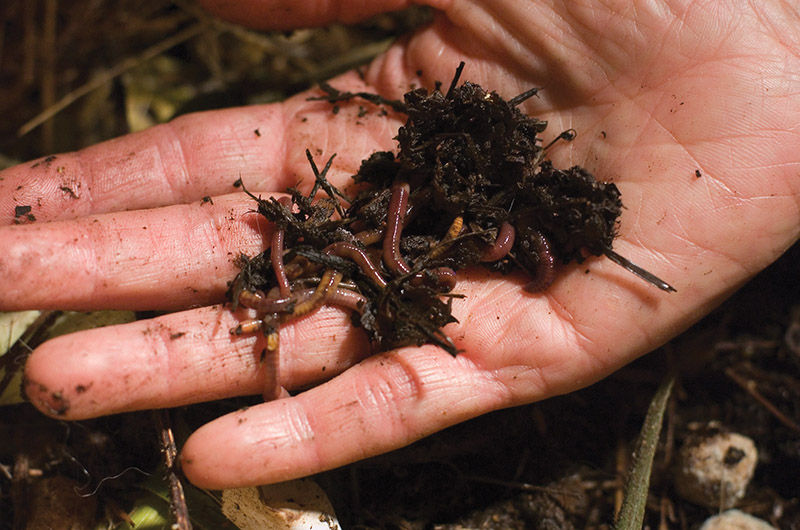Red wigglers: Enhance soil
Red wigglers: Enhance soil
Blog Article
Red Wigglers: The Secret to Eco-Friendly Composting
Red wigglers, clinically called Eisenia fetida, play a critical role in sustainable composting practices, using an all-natural solution to squander management. These worms not only consume natural products however additionally transform them into important vermicompost, enriching soil wellness and promoting environmental equilibrium. As metropolitan areas face enhancing waste challenges, comprehending the advantages and proper care of these organisms becomes essential for both garden enthusiasts and conservationists alike. What specific steps can individuals require to harness their possible effectively?
What Are Red Wigglers?
Although lots of people know with earthworms, red wigglers (Eisenia fetida) are a specific species that play a crucial function in composting. Native to Europe, they have actually adjusted well to a range of atmospheres, especially in disintegrating raw material. Unlike typical garden worms, red wigglers prosper in abundant, damp settings, making them suitable for composting systems.
(red worms near me)These worms are identified by their reddish-brown coloration and extended bodies, generally measuring between 3 to 4 inches in length. Red wigglers are epigeic worms, implying they stay near the soil surface and prey on decomposing organic material. Their high reproductive price enables populaces to expand rapidly under optimal problems, with the capacity to increase in number every few months.
Red wigglers possess an unique digestive system that enables them to break down organic waste effectively. Their sustainable nature makes red wigglers a beneficial possession in eco-friendly composting methods.
Benefits of Using Red Wigglers
Utilizing red wigglers in composting systems offers countless advantages that boost both the effectiveness of waste decomposition and the quality of the resulting garden compost. These earthworms, medically referred to as Eisenia fetida, are renowned for their phenomenal capacity to take in organic waste, transforming it right into nutrient-rich vermicompost at a remarkable price. Their fast food digestion procedure accelerates the break down of cooking area scraps and yard waste, significantly reducing the moment needed for composting.
Along with their performance, red wigglers contribute to improved dirt structure and fertility. The vermicast generated by red wigglers is rich in necessary nutrients, helpful bacteria, and humic acids, all of which enhance dirt health and wellness and promote plant growth. This nutrient-dense garden compost helps keep dampness and improves oygenation in the dirt, fostering a growing community for plants.
Furthermore, making use of red wigglers for composting reduces landfill waste, adding to a more lasting waste administration system. By drawing away natural materials from landfills, composting with red wigglers minimizes greenhouse gas emissions, making it an eco-friendly choice for eco aware individuals and areas. Overall, red wigglers supply a reliable and lasting solution for composting.
Establishing Your Worm Bin
Creating a worm container is a straightforward process that needs cautious factor to consider of products and problems to make sure a thriving environment for red wigglers. Begin by selecting a suitable container, which can be a plastic bin or wooden box, with an ability of at least 10 gallons for effective composting. Make sure the bin has appropriate air flow by piercing tiny holes in the lid and sides to enable air movement.
Following, prepare the bed linens, which is essential for maintaining moisture and supplying an environment for the worms. Suitable materials include shredded newspaper, cardboard, coconut coir, or peat moss. Goal for a bed linen deepness of about 4-6 inches, ensuring it is moist however not excessively damp.
It is very important to keep the ideal temperature for your worm bin, preferably between 55 ° F and 77 ° F(13 ° C and 25 ° C) Position the container in a shaded location to stop getting too hot. Additionally, keep the bin far from direct sunshine and extreme climate condition to protect the worms.
Feeding Your Red Wigglers
Feeding your red wigglers is an important element of successful worm composting, as it straight influences their health and wellness and the efficiency of your composting system - red wigglers. look at this web-site Red wigglers prosper on a healthy diet plan consisting mainly of organic waste products.
(red wiggler worms near me)Beginning with tiny quantities to enable the worms to take in the material completely before including extra. Display the food disintegration process and change the quantity based on how rapidly the worms are processing the waste.

Keeping Your Worm Compost System
A properly maintained worm compost system is essential for making the most of the effectiveness and longevity of your composting initiatives. Normal tracking of wetness degrees is essential, as red wigglers prosper in a wet environment, preferably around 70% moisture. If the bed linens becomes also completely dry, gently mist it with water; on the other hand, if it becomes excessively damp, include completely dry bed linens such as shredded newspaper or cardboard to absorb excess dampness.
Temperature control is likewise essential. Guarantee your garden compost system is maintained in a shaded, aerated location to stop overheating.
Additionally, check for any unpleasant smells, which may indicate an inequality in the system. Routinely aerating the compost by delicately transforming it will certainly aid maintain proper airflow and protect against anaerobic conditions. Lastly, keep track of the worm population and their task; a flourishing population indicates a well-balanced setting. By complying with these maintenance techniques, you can make certain an efficient and sustainable worm composting system that properly reuses organic waste.

Conclusion
Finally, red wigglers play a vital role in green composting by successfully transforming organic waste right into important vermicompost. Their capability to prosper in rotting materials not just aids in minimizing land fill waste and greenhouse gas discharges however additionally enhances soil health and wellness. By advertising moisture retention and aeration, these worms add considerably to lasting gardening methods. Accepting the use of red wigglers represents a functional strategy to improving ecological sustainability and promoting much healthier ecological communities.
Report this page